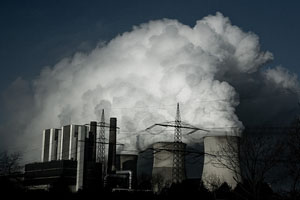Is Energy Secretary Steven Chu low-balling the potential cost to taxpayers for the Obama administration’s planned nuclear revival?
According to the energy wire service Platts, Chu told reporters last week that credit subsidy rate–which represents the anticipated cost of a loan guarantee to the government paid into a fund by the loan recipient–for the Vogtle plant in Georgia would be in “the range of 1 percent of the loan, plus or minus a half a percent.” The Georgia plant received a conditional loan guarantee of $8.3 billion last month for two reactors, the first award in the Obama administration’s planned renaissance.
As I reported earlier today, the administration has so far been unwilling to give an exact credit subsidy rate for new reactors, citing business confidentiality. The nuclear industry wants the fee to be 1 percent or less. Chu stated in testimony before the House Committee on Science and Technology last week that the DOE “is tasked to convince OMB that it will cost the taxpayer zero” because the loan guarantees “are self pay”–meaning, the credit subsidy would be sufficient to cover the cost of potential defaults. From Chu’s remarks, it sure seems like the Obama administration is set to give the nuclear industry what it has asked for, even if that subsidy rate does not reflect the real risks.
Many observers believe the subsidy rate should be much higher than the figure Chu offered in order for that to be the case, listing skyrocketing costs, delays, and a history of defaults as cause for concern. The credit subsidy rate should be as high as 30 percent, according to the Congressional Budget Office, if it is going to insulate consumers from the risk of default on new nuclear reactors (a figure the CBO reiterated in blog post last week). A new analysis from Richard W. Caperton, an energy policy analyst at the Center for American Progress, finds that outside estimates and calculations indicate that the cost “should be at least 10 percent and possibly much more.” A lower figure, like the one Chu offered, would have to be based on a lot of assumptions about the cost and trajectory of the nuclear industry that don’t appear to be realistic.
Caperton concludes that the administration’s anticipated subsidy rate of 1.5 percent or below is far too low to protect the public from taking on the burden of nuclear projects that go belly up. The administration, he notes, needs to keep in mind that credit subsidy fees “should be set at a rate that protects taxpayers, not at an artificially low rate as a handout to big utilities.”













